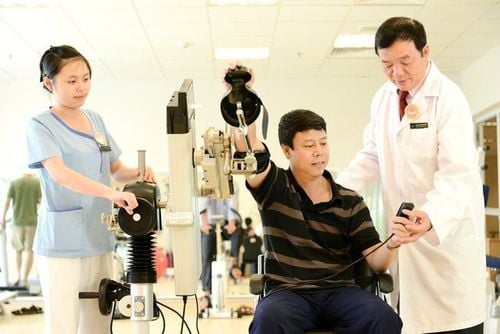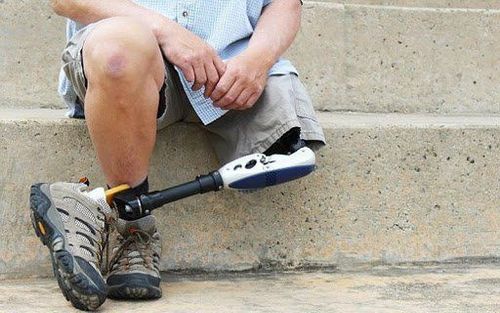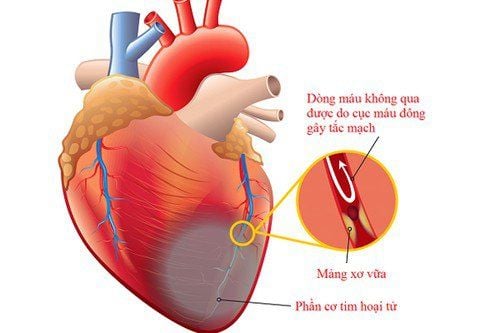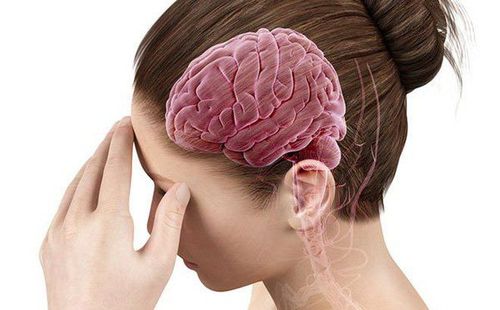This is an automatically translated article.
Functional assessment for people with disabilities helps patients to be able to perform daily activities and integrate into community life. From the results obtained through the evaluation process, it helps the patient and the treating doctor to find the right method to improve the patient's condition and improve the patient's quality of life.
1. People with disabilities
People with disabilities may have one or more physical and mental impairments that will cause a significant and long-term impairment in the ability to perform activities and daily activities.
According to the World Health Organization, disability refers to a reduction in functioning which is also considered a consequence of the impairment. According to the International Organization for Disabilities, people with disabilities become disabled due to lack of opportunities to participate in social activities and lead a normal life like everyone else.
The underlying causes of disability can be divided into the following contents: physical disability, extremity disability, motor disability; impaired senses leading to blindness, deafness, hearing impairment, visual impairment...; speech and reading disabilities such as dumbness, slurred speech, reading disability...; Disability in ability to learn and practice; Psychological disability such as cerebral palsy, intellectual disability, autism ...
Based on the causes of disability, it can be classified into acquired developmental disability such as disease, loss, injury accident, injury, ... or birth defects due to genetics or chromosome mutations, loss at birth...
2. Functional assessment of people with disabilities
Functional assessment of people with disabilities is performed as an important task by rehabilitation professionals. Through functional assessment of people with disabilities, each patient will be set up a rehabilitation exercise program for people with disabilities to suit their current functional status.
The most commonly used disability assessment tool today is called FIM - Functional Independence Measure - Functional Independence Measure was built in 1984 in the US and this tool version was completed in 1996. Through many researches by authors around the world, the FIM tool is evaluated as a valuable and highly reliable toolkit. Since then, the FIM tool has been widely applied in rehabilitation centers around the world.

Thông qua việc lượng giá chức năng của người khuyết tật, bệnh nhân sẽ được thiết lập một chương trình luyện tập phục hồi chức năng người khuyết tật phù hợp
The FIM assessment tool is designed with 18 factors to be used to assess the functional independence of the patient, of which 13 factors are related to motor function, self-care function. and 5 factors related to cognitive function.
13 factors related to motor function and self-care function include: Eating, personal hygiene (brushing teeth, washing face, combing hair, shaving, applying makeup...), bathing , wearing pants, wearing a shirt, bowel control, urinary control, using the toilet, moving between bed, chair and wheelchair, moving to the toilet, using the bath, shower , walking on two legs or a wheelchair, taking stairs.
5 factors related to cognition include: Language comprehension, language expression, problem solving, social interaction, and memory. Each of these factors will be assessed for functional independence on a scale from 1 to 7 including:
Scale 7 : Complete independence: The patient performs the task independently and safely. completely, on time, without other people's help, without tools
Scale 6: Modified independence: The patient completes the task without assistance, but the person The patient still requires assistive devices or takes a longer time to perform than the average person or there is a potential risk of unsafety when performing
Scale 5: Supervision: The patient needs someone by his side. to supervise, motivate or give verbal instructions without touching the patient
Scale 4: Minimal assistance: The patient needs 25% of the help and the patient performs 75% of the tasks on their own. service or more.
Scale 3: Moderate Assisstance: The patient needs 50% of the help and the patient can perform 50% to 74% of the task on his own.
Scale 2: Maximal Assisstance: The patient needs up to 75% of the help, and the patient can only perform about 25% to 49% of the task on his own.
Scale 1: Total Assistance: The patient will be almost completely supported by the helper during the performance of the task. The patient can only perform less than 25% of the task.

Công cụ đánh giá FIM được thiết kế để đánh giá khuyết tật của người khuyết tật
3. Subjects who need to carry out functional assessment of people with disabilities
Use the FIM function independent assessment table to evaluate cases of neuropathy, disability, and musculoskeletal disorders that affect motor function, which may or may not be present. may not be accompanied by impairment of cognitive function. In addition, the functional independence panel used assessments for the elderly.
However, the FIM independence rating scale is not suitable for the assessment of cases such as: Young children who are not yet able to perform activities independently, people with behavioral disorders, inability to cooperate in the evaluation process by the tool scale.
After conducting functional assessment, people with disabilities still need to be monitored periodically, including the length of the patient's stay in the hospital and even when the patient is discharged. At the same time, monitor the patient's ability to perform functional activities.
Vinmec International General Hospital is one of the hospitals that not only ensures professional quality with a team of leading medical doctors, modern equipment and technology, but also stands out for its examination and consultation services. comprehensive and professional medical consultation and treatment; civilized, polite, safe and sterile medical examination and treatment space.
Please dial HOTLINE for more information or register for an appointment HERE. Download MyVinmec app to make appointments faster and to manage your bookings easily.













